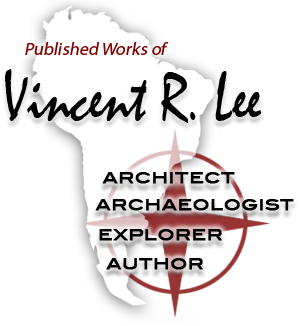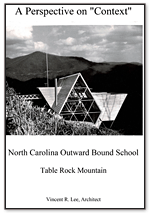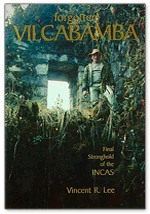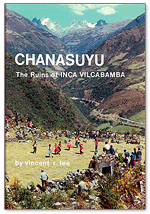AN ANTHOLOGY OF ARCHAEOLOGICAL ODD JOBS
This is a collection of the author’s previously unpublished papers and stories as well as brief summaries of projects done in collaboration with colleagues.
An Anthology of Archaeological Odd Jobs
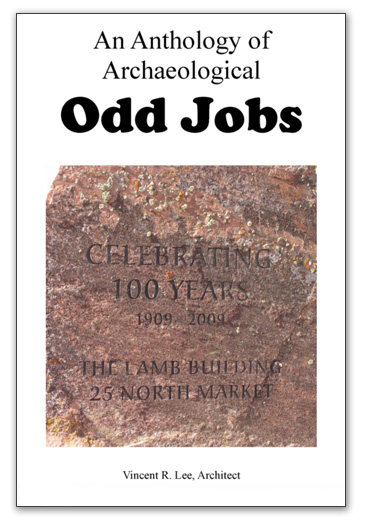
My father, Claude F. Lee, Sr., led a very interesting life. Born in the Appalachian Mountain town of Asheville, North Carolina, he was the son of the county sheriff and was just beginning studies at the local Junior College when the First World War broke out. Like many men his age at the time, he enlisted in the Army and was soon on the battlefields of France. As boys, my brother and I occasionally heard stories of his luck as men on each side fell in the insane frontal attacks that too-often characterized that conflict. Early on though, he was sent to officer school and reassigned to aerial intelligence, photographing the action from the front seats of bi-wing airplanes. War’s end found him in Paris, the classic farm boy whose eyes were opened there to the wide world beyond the hills and hollows of his youth.
On his return home, he met, courted and married my mother and the two were off to seek their fortunes in then booming Florida, where his fascination with “movies” he’d seen in Europe drew him into the theater business. His success quickly caught the attention of Paramount Pictures, then headquartered in New York, and he was asked to lead their new “public relations” department. His long career exactly coincided with the heyday of the movies, putting him in constant contact with all the film stars of the era in both Manhattan and Hollywood. At the close of World War Two, he was assigned the task of filming the formation of the United Nations in San Francisco, where he became acquainted with many of the famous world leaders in attendance. As a boy, I was only vaguely aware of all this, but one thing he said I recall as though it was yesterday. He’d tell my mother, “You know, I ought to write a book about all this.” He never did. Even as a kid, I thought, That’s one mistake I’ll never make!
And so, I haven’t. I’ve written briefly about my own eye-opening, early tour with the Marines, and more fully about my several “careers” as an architect, mountain guide, explorer and, most recently, as an amateur archaeologist. “Amateur” sums it up best. I did it all for the fun of it, even the writing. This collection recounts a few archaeological projects that didn’t quite fit anywhere else and either didn’t seem to rate stand-alone, formal publications or were done in collaboration with friends and colleagues who published my contributions elsewhere. As a writer, I’ve long hoped to become a real “author,” writing fiction. I think next time I will. Two of the selections here may give an idea how good my chances are of succeeding.
Take a look inside this publication
Table of Contents
The Artifact
The Artifact is brief tongue-in-cheek story I wrote at the very beginning of my forty-year “career” in avocational archaeology, inspired by my own beginner’s experience in the midst of a then-ongoing Peruvian dispute between two archaeological news-makers I’d only recently met. The other issues then in the headlines centered on problems being uncovered within the LDS Church down in Salt Lake City. The Book of Mormon suggested a fanciful connection between the two otherwise unlikely stories. I cast myself as “Biff,” the neophyte Ivy-League messenger-boy.
Mapping Espíritu Pampa
Mapping Espíritu Pampa ties together my initial fieldwork once I ventured to Peru, sketch mapping the overgrown and long-abandoned ruins of Vilcabamba the Old, the final redoubt of the once-powerful Incas. Despite being totally untrained in archaeology, I was determined to document the site, located at Espíritu Pampa, a jungle-choked valley in the Upper Amazon. Armed with only a LANDSAT image of the terrain, compass, machete and notebook, I recorded several hundred structures and their layout scattered through the rain forest. Not until thirty years later would the site be cleared and plotted by GPS. How close were my maps to the results?
Inka Royal Estates
Inka Royal Estates were another focus of my early work in Vilcabamba. Aside from Espíritu Pampa, the other major Inka site in the province was Vitcos, on the hilltop of Rosaspata. It had been built by Pachacuti, the illustrious ninth king of the Inkas as a personal retreat when visiting the region, far from the capital at Cuzco. Elsewhere, several other sites reputed to have been such royal “country estates” seemed quite unlike one another and Vitcos until they were mapped and studied in greater detail.
Surprisingly, the very same elements characterized the royal precincts of all, their arrangements differing only in accommodation of the terrain. Discovery of this pattern may have established a template for the identification of other such sites.
Julian Tennant’s “Quest for Paititi”
Julian Tennant’s “Quest for Paititi” is the story of an Englishman’s early exploration
In the unmapped homeland of the Machiguenga Indians deep in the jungle beyond Espíritu Pampa. He reported “major stone ruins” that no one else had ever seen. I was intrigued by the story, especially since his report was confirmed by a small band of “Machis” I’d encountered in the ruins of Vilcabamba the Old. The problem was that all Tennant knew of the site’s location was that it was “high in the Río Montaro” and on a “knifedge” ridge south of a range of high, rocky peaks.” Not until decades later was I able to pinpoint the site using Google Earth, but was I right?
The Search for “Chuquitiray”
The Search for “Chuquitiray” began with a letter from John Rowe, professor of archaeology at UC Berkeley and long-time dean of Andeanists who’d become my unintentional mentor. He was responding to some material I had sent him, but went on to report the contents of a 1710 gold prospector’s letter describing his travels through Vilcabamba and four abandoned Inca sites he’d encountered along the way. Three were easily identified, but the fourth, “Chuquitiray,” was unknown. I was determined to find the “lost” city, starting my search near the modern village of Choquetira in a remote fringe area of Vilcabamba, but after four expeditions that turned up several interesting alternative sites, I never did. Despite various equally unsuccessful efforts by friends and colleagues, it may still be out there somewhere in the jungle, awaiting discovery.
Collaborations with Adriana von Hagen
Collaborations with Adriana von Hagen, archaeologist and daughter of famed Andean explorer and author, Victor Wolfgang von Hagen, were the result of our long-time association as friends and colleagues. My work with others at the Chachapoyan site of Vira Vira and the resulting publication (see Lee, Vira Vira, 1994) had established my abilities as both a mapmaker and illustrator of Reconstruction views of tumbled sites. Both turned out to be just what she needed occasionally to complete projects of her own and I was only too glad to help out, especially since she had been extremely helpful to me in my work in numerous instances.
Reconstructions
Reconstructions were also contributions I made to the work of another colleague, Dr, Brian Bauer, prominent Andeanist and professor of anthropology at the University of Illinois at Chicago. He was the first professional American archaeologist to engage in serious study and excavations in Inca Vilcabamba, partly inspired to do so by my 2000 book, Forgatten Vilcabamba, and partly by the belated attention to the province by the Peruvian government. Bauer began working at the Sun Temple of Ñusta Ispanan near Pachacuti’s estate at Vitcos and later moved his efforts down to Vilcabamba the Old at Espíritu Pampa, publishing the results in 2015 under the title Vilcabamba and the Archaeology of Inca Resistance. My work is referred to often in the text and various of my reconstruction drawings are included.
Club Meg News
Club Meg News is excerpted from a newsletter published by another friend and colleague, Rob Roy, with whom I share an interest in megalithic architecture and the ancient technologies required to build it. Both of us have sponsored experimental exercises to test the efficacy of such techniques and the one described here was done in my hometown of Cortez, Colorado in 2009.
Erecting Obelisks
Erecting Obelisks takes off where an earlier paper, The Unfinished Obelisk (see Lee, Ancient Moonshots, 2013), leaves off. Much like the construction of the Great Pyramid (above), the final step in the raising of these enormous monuments remains an open question. An obscure and hitherto unnoticed detail at the entrance to the Luxor Temple in Thebes (present-day Luxor) suggests a possible answer. The extremely precise drawings of the site by Napoleon’s 18th century savants, together with my own brief visit to the temple in 2001 presented an architectural puzzle possibly resolved here.
Pirqa Architecture and Construction
Pirqa Architecture and Construction explores the little known fact that the great bulk of Inka construction was not fashioned from the perfectly fitted, mortarless stone blocks for which their masons are justly famous. Rather, random field stones (and even adobe bricks) set in clay mortar and covered with painted plaster inside and out were used to build even some of the most important structures in the empire. Here, two such projects are described, one the largest surviving Inka building in the Andes and the other a tiny, but near perfectly preserved solar observatory associated with Pachacuti’s royal estate at Vitcos.
Hemiunu’s Complaint
Hemiunu’s Complaint is a fanciful story that takes a crack at one of the most enduring problems in ancient megalithic construction, building the Great Pyramid of Khufu at Giza. Far from an Egyptologist or even a researcher well informed about Egyptology, I have nevertheless found certain aspects of the debate on this issue at odds with my 34-years of architectural practice. The arrangement of the interior spaces, for example, makes no sense unless the result of program changes during construction. The giant, gabled lintel blocks above the 2×2 “cubit” (appx. 4×4 ft.) entry/exit passage are ridiculously over-sized unless related to another unknown purpose. And, finally, the fabled Grand Gallery looks to me very much like a device for raising the giant granite blocks forming the King’s Chamber and its roof. These and other features of the project fall neatly into place here for the first time.

